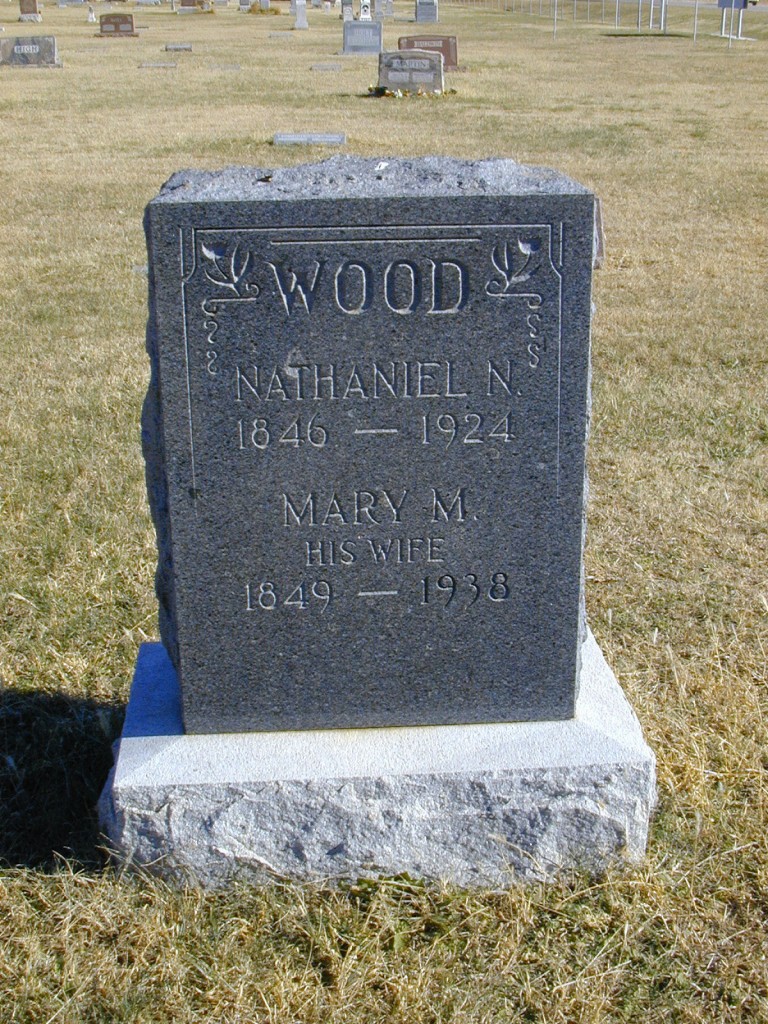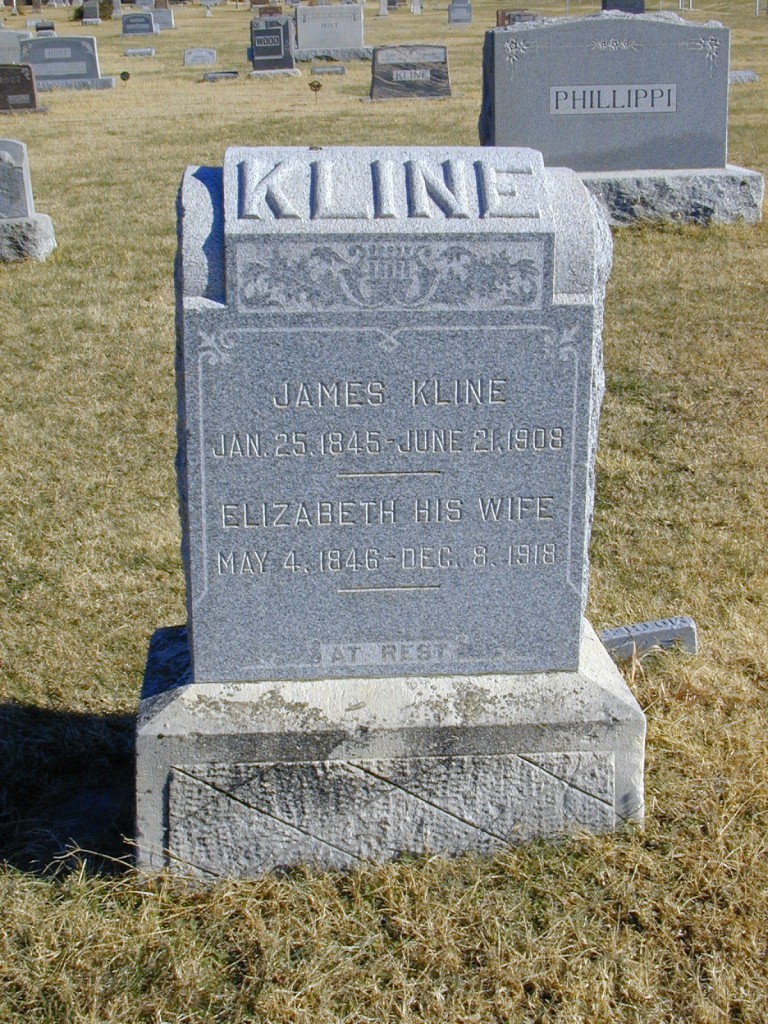Posts Tagged ‘Mary’
Amanuensis Monday – April 1849 Gold Rush Letters
Recently I began to index the Pioneer Settler files at the Sumner County Historical and Genealogical Society. I have to confess that I expected most files to contain at the most forty names, and that it would be a piece of cake to get them indexed in short order.
Oh, my goodness, was I ever wrong! There are as few as 33 names in some files, and as many as a thousand in others,and those require a lot of typing and sorting.
Whew! I still feel pretty ‘lazy’ for not getting through very many files in a week’s time.
But I’ve found some very interesting things hidden in those files, and will share some of that here and some on the SCHGS blog, too.
And today I posted Part Three of the copies of the John Arnspiger Gold Rush letters that were located in the Arnspiger Files in the Pioneer Settler files! Very interesting.
You can find that blog post here. And my apologies for not knowing how to make the blogger blog a little fancier just yet!
Transcribing 1849 Gold Rush Migration Letters
by Sherry Stocking Kline
24 March 2010
Last week when I volunteered to index some of the Sumner County Historical and Genealogical Society Center’s files and records, I had no idea what kind of historic treasures and glimpses into people’s lives I was going to find!
I brought home the Pioneer Settler “A” files, sat down at my computer, and began to open up the files expecting to find simple papers documenting our early settler’s ancestry.
What I quickly found were stories, the first being of a wife and children kidnapped by the Indians during the massacre of rural families in the Saline Valley in Kansas, (about 2 1/2 hours north of us here) and the treasure I’m transcribing now, copies of an Illinois man, John Arnspiger’s letters back home to his wife, Mary, his grown son Henry, his little children, Lukey and Rebecca Ellin, and unnamed grandchildren as he travels to the California Gold Rush, certain that he will soon better his life for his family.
The letters document the group’s troubles traveling up river to get to St. Joe, Missouri, his fears of the cholera epidemic that was there and the many deaths, the Indians that they meet along the way, both friendly and not, the buffalo and other game that they eat on the way, and his fears that he may never see his family again.
Unfortunately, after I read ahead, his last letter ends with the writer ill, lying in a wagon in California, a week away from the Gold Fields at Sutter’s and me with so many unanswered questions!
Did he die? Did he get to Sutter’s and simply get busy? How did his family come to be in Sumner County, Kansas, where his son Henry and his wife and children later settled? When I can, I will find these answers to add to this Pioneer Settlers’ files, and share!
29 April 2010 Update: Now you can read Part One of the Gold Rush Letters Transcription Here: http://www.ks-schgs.blogspot.com/
Tombstone Tuesday – Nathaniel & Mary Wood
Nathaniel and Mary McMulin Wood are buried in the Milan Cemetery, Ryan Township, Sumner County, Kansas. This cemetery is located one mile west of Milan, Kansas (and about 15 miles west of Wellington) on Highway 160.
Nathaniel and his wife Mary were homesteaders in Sumner County, owning a quarter section of ground just about two miles west of Milan on what is now known to locals as “old 160 highway”. My apologies to anyone who is researching, I don’t know the new 9-1-1 name for this country road without driving out to look.
Nathaniel and Mary were my husband’s great grandparents on his father’s side, and though I do have a little more information on them, I don’t have much and I don’t have it with me right now.
My mother-in-law, C. Maxine Deffenbaugh Kline, always told me that Nathaniel’s nickname was “Than” and I thought that was interesting, as most would be nicknamed Nat or Nate.
Someday soon I need to do more research on that line!
P.S. If Nathaniel and Mary are in your family tree, please leave a note so we can ‘connect the dots.’ Thanks and ‘happy hunting!’
James and Elizabeth (Conver) Kline – Tombstone Tuesday
by Sherry Stocking Kline
November 6th, 2009
On the Stone:
James Kline
Jan. 25, 1945 – June 21, 1908
Elizabeth His Wife
May 4, 1846 – Dec 8, 1918
James and Elizabeth (Conver) Kline are buried in Ryan Township Cemetery, near Milan, Sumner County, Kansas. The cemetery is located one mile west of Milan, Kansas on Highway 160.
James and Elizabeth (Conver) Kline came to Caldwell, Kansas shortly before the 1893 Cherokee Strip Run, where as family story has it, James ran in the Cherokee Strip Run, and when he was not fortunate enough to win free land, he later came to the Milan, Kansas area, where he purchased land along the Chickaskia River south of Milan.
James was born in Clarion County, PA.
Some of the following information includes information that I personally have found, but also includes information that I received from cousin Liz Williams:
Elizabeth Conver was born 4 May 1846 in Richland, Lebanon Co., PA, and was the daughter of of John A. Conver & Marry Huff.
James and Elizabeth were married in Knox, County, Illinois on 31 Oct 1867. They had three sons that died before they came to Kansas, Charles William Kline, born in 1868 but died before 1870, and two more sons, Levi born in 1870 in Illinois and Samuel born in 1872 in Iowa also died young.
After coming to Kansas, they had seven more children. The oldest surviving son, John Conver Kline, was my husband’s grandfather.
James and Elizabeth’s other children were: Newton Oliver Kline, Susan Alica Adilia Kline, James Monroe Kline, Walter Cleveland Kline, Orie Ray Kline, Mae Violet Kline
I would love to connect with other members of my husband’s Kline, Conver, and Huff family to share information, so please leave a comment with your contact info and I will respond asap.
Was Your Ancestor a Witch?
by Sherry Stocking Kline
Published in October 2002 in the Wichita Eagle “Active Life” Magazine
When people start to climb their family tree they often hope to find royalty, presidents, or founding fathers, but imagine the surprise of two Wichita women when they found out their ancestor was a Salem witch.
Ardith Ott was in Salt Lake City researching her family tree when she made a surprising discovery.
“I was looking at my Bixby/Byxbe line,” Ott said, “and I found out that this woman who was hung as a Salem witch was one of my ancestors.”
Your Famous Ancestor May Show up in Books, Plays, or Movies…
As Ott soon learned, when your ancestor is famous (or infamous) your family information may be included in history books, show up on the front pages of newspapers, and be documented in trial transcripts. And your ancestor and the events surrounding them may be turned into books, movies, and plays, and your ancestral home be turned into a tourist attraction.
Ott’s ancestor was Rebecca Nurse, accused of witchcraft in March, 1692, tried, found innocent, re-tried, found guilty, excommunicated from her church in Salem, and hanged on July 19, 1692.
At first, Ott said she found it amusing to tell people that her ancestor was a Salem witch.
“I thought it was pretty funny when I discovered it,” Ott said, “until I read more about it; then I felt guilty for laughing. She was a victim.”
“My ancestor was hard of hearing,” Ott said, and would turn her head like a deaf person, so her accusers said that she was communicating with a bird in the rafters.”
Forty Friends Testified to Her Character…
Ott added that Nurse had almost forty friends, neighbors, and family members that testified to her character and innocence, and the Salem Witches Web site at the University of Virginia, said that seventy-year-old Rebecca Nurse was an elderly and respected member of the Salem Village community.
Betty McGehee, member of Associated Daughters of Early American Witches and a 14th great-granddaughter of Rebecca Nurse, said she joined the association to educate others that the people accused were not practicing witchcraft but were victims of the superstitions and hysteria of the times.
McGehee said that three of William Towne’s daughters, Rebecca Nurse and her two sisters, Sarah Cloyce and Mary Easty were also accused of witchcraft. Mary was hung in September of 1692 and Sarah was acquitted after spending months in jail.
What Started it All?
You know how when you tell a story sometimes it grows out of bounds,” Ott said.
“It was just a form of hysteria, and it all started with a couple of mischievous girls who started blaming everybody for something that went wrong,” McGehee said.
Tales of Voodoo and Witchcraft Fueled the Fire…
Fueling the hysteria, McGehee said, was a man who blamed the witches for the birth of a two-headed calf, and a couple of little girls that fell on the floor in church and claimed that Nurse had cast a spell on them. Adding fuel to the fire were the Barbados-raised servant girl Tituba’s tales of voodoo and witchcraft.
Research since then has indicated that some of Nurse’s accusers were individuals involved in land disputes with the family. Individuals who benefited from the Nurse’s death and the family’s problems.
Another possibility, according to “Poisons of the Past: Molds, Epidemics and History” by University of Maryland Historian, Mary Kilbourne Motassian, was that exposure to a dangerous grain mold called ergot may have caused some of the strange symptoms people reported, symptoms that included nausea, temporary blindness and deafness, and hallucinations.
According to Dick Eastman, journalist for Ancestry Daily News at www.ancestry.com, “By the end of May 1692, two hundred accused witches were in jail, and twenty men and women were hanged, crushed to death, or left to die in prison…..” (map of witchcraft accusations can be found here.)
The Graves Were so Shallow…
Ott’s research uncovered the fact that her ancestor was thrown into a grave on Witch Hill with other witches, graves that were so shallow that the dead people’s hands stuck up in the air.
Nurse’s sons recovered her body and buried her in an unmarked grave. Nearly 200 years later her descendants erected a monument to her memory, listed the names of those who came to her defense, and inscribed the monument with a poem written especially for her by John Greenleaf Whittier.
Ott and her family visited her famous ancestor’s home, Salem Village, viewed the diorama, and the monument that her descendants erected to her memory.
Infamous Ancestors More Interesting?
“It’s nice when your ancestor’s were good people,” Ott said, “but when you find something unusual, that makes it more interesting.”






